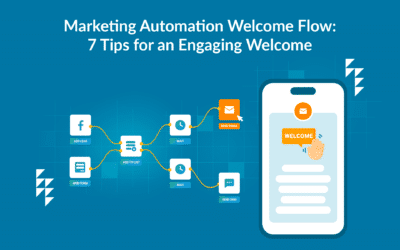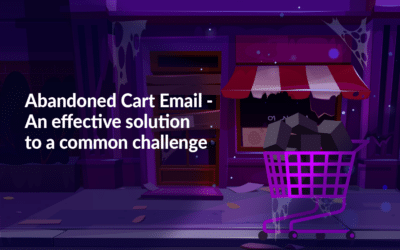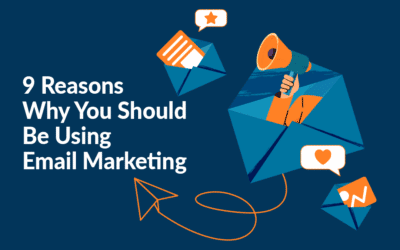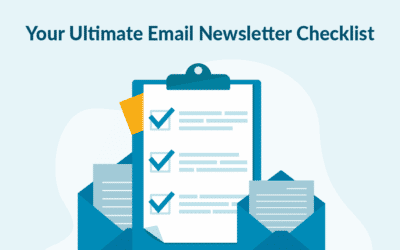What to Put in An Email Newsletter?
Marketers face a daunting and frustrating task to have to continually come up with fresh ideas with content for email newsletters. However, ideas can be endless so it is when you have a great idea that meets consumers’ needs that your brand and product can truly shine.
Here are 21 great ideas for you to focus on, so you can renew your content and create more engaging email newsletters.
1. How-to Videos
People always want to learn more, and how-to videos have always been an extremely popular way of learning. So, create a series of training videos for your emails, which can be uploaded on YouTube. By offering these videos you can entice people to sign up to your newsletter. In addition, they can watch and learn in their own time too.
2. Competitions and Giveaways
Who does not like to receive a FREE giveaway? People are naturally drawn to competition. The idea of winning makes people feel good. So why not offer FREE giveaways via a competition. It is sure to get recipients to open your newsletter and increase your open rate. It also provides you with the opportunity to advertise products which the recipient cannot do without, potentially leading to a new sale.
3. Offers or Discount Codes
Have you found that customers visit your web-shop but do not make a purchase? Why not entice them with a discount for a limited time only to buy the item(s) they viewed? For example: “Buy Now and receive 15% off”. Also consider existing customers, who have purchased before, gained your trust, but may not have purchased again in a while. You can offer them discount codes to show you acknowledge their loyalty as a previous customer and have them visit your web-shop again, potentially resulting in a new purchase. With marketing automation this can be done hassle free.
4. Customer Reviews
Asking for feedback from customers to provide a review on one or more of your products. Customers love to have the opportunity to share their opinion. In some cases, where customers do not want to share their opinion, you could consider offering a gift card to entice them to write a review. Potential customers gain trust in reading positive reviews from other customers. Reviews can be shared in a newsletter and on your website.
5. Spotlight on an Employee
Most people tend to hear from the owner or CEO of a company when communicating important information. But why not use an employee to deliver your message. After all, people can relate to a regular employee as “one of them” which will make them feel comfortable. You can send emails periodically (weekly or monthly) with the tagline “Employee of the Month” or “Employee’s Product of the Month” and list reasons to help sell your product.
6. Success Stories
People want to hear success stories about your products, otherwise they will have reservations about buying from you. Success stories can be about how your products have helped your customers. So, a classic example is a before and after image showing the positive impact your product had on them.
7. Submissions from the Owner or Director
Let the owner or director wish all recipients of the newsletter a good holiday. Here, he or she can also elaborate on their own plans or past holiday experiences along with some photos with the family. This would provide a more personal human touch. The more personal, the more powerful.
8. Business and Industry News
By providing customers with insight into what is happening within the company shows personal direct communication between company and customer, adding to the trust factor and brand reputation. It can also show that the company is evolving and listening to any feedback provided if the news is related to any improvements. Often sending out newsletters about up-and-coming products will keep customers intrigued. People want to be up to date with all new products and/or trends. Existing customers can automatically be sent an email about a new version or product update, which in return can lead to a new sale.
9. Questions and Answers
Websites will have a section for Q&A or generally asked questions. It is also useful to use this information by sending out newsletters to better inform customers about general information. Have your customer service team provide you with the most common questions that customers ask. This will provide you with the relevant content required. It will also relieve the customer service team of continually answering the same questions to individual customers.
10. Solutions to Problems
Having problems with a particular product? Do not shy away from the problem. Failure to address this issue will put doubt into the customers mind, not only about the product, but about the company too. So, a prompt response and solution will not only take care of the customer’s concerns but will restore faith into both company and product. A positive outcome can be used as a review.
Try MarketingPlatform for free for 14 days
The trial period is free, completely non-binding and expires after 14 days if you do not wish to continue.
When you sign up, you will also receive our educational flow via a series of emails along with our newsletter with regular updates.
11. Defective Goods
Receiving a batch of goods which are defective can be quite frustrating, especially when they cannot be returned. Instead of throwing the goods away you can make light heart of the situation and sell them at a heavily discounted price. Someone may find good use for these products. This can also be good publicity for the company.
12. Problem Selling a Particular Product?
Are you encountering a problem in selling a particular product? Then why not try and mix up the approach by creating an informative video with some humor where an employee can present the product. Add a short line in your newsletter that sounds intriguing with a link to the video (via YouTube).
13. Attract Attention to Your Other Channels
The use of an email newsletter can be used to attract attention to some of your other channels like Facebook, Twitter, YouTube, Instagram, Pinterest etc. For example: a special announcement on Facebook, a how-to video on YouTube, a free giveaway on Instagram. All this can help to increase your followers and raise brand awareness.
14. Cross-promotion
Teaming up with another company where your products support each other can be extremely beneficial when looking for audiences that are not in direct competition. Use your newsletter to inform recipients that if you purchase product A it can support product B that was purchased from your partner’s website. In turn, your partner company can do the same.
15. Sponsorships
If you are a sponsor of an event or a sporting club, use this information to your advantage. By adding this information into your newsletters, you will point out to your recipients of the good you are doing for the community. It will create a positive image of your brand. You can also promote your products or even hand out samples at events, ultimately engaging with new people and boosting sales.
16. Opening of New Stores
If you have a new store opening, it will show customers you are growing. A newsletter can attract traffic to the new store. It may be closer to home for some, so they will be drawn to go and have a look. You can also draw others by offering a special discount for the first week only. For example: “Grand Opening Sale”. A newsletter can be followed up by SMS with “Now Open”.
17. Webinars
Conducting webinars is another way to communicate with your audience. Most importantly, you can communicate with anyone around the world. Use your newsletter to notify recipients of upcoming webinars and how to sign up. This direct form of communication can build trust and brand awareness while generating new leads.
18. Guest blogs
Guest bloggers are used to offer their expertise on a subject matter. If you have done a guest blog for another company, this can bring many benefits. Not only can you increase your own profile, but you can also expose your brand to a whole new audience. Alternatively, you can have a guest blogger on your site, which can provide a different perspective while assisting your customers. You can use an excerpt from the blog to add to your newsletter, linking it back to the article.
19. Popular Videos or Articles
What better way to reiterate your most liked videos on YouTube or most read articles from your website by sending out a newsletter to showcase your highlights. This can be done as “Video of the Week” or “Article of the Week”. It can help create trust and consumer confidence.
20. Loyalty Program
Loyalty programs are a great way to promote and sell new products to your existing customers. Repeat customers are loyal and will spread the knowledge of your product and brand through word of mouth. Regular newsletters can remind subscribers of the benefits they have of being considered VIP.
21. Positive Feedback
Positive feedback is the perfect antidote to having a bad day. It restores your energy and faith into the hard work you put in. When a customer provides positive feedback it not only reassures your product, but your company too. It helps generate leads and repeat business, all in all a successful outcome.
Get A Move On
With the above examples you can now go ahead and let your creative juices start flowing. Be creative and inspire others to fall in love with your brand and product.
This blog post has also appeared in a MarketingPlatform Newsletter.
Author Alex Trajcevski
Try MarketingPlatform for free for 14 days
The trial period is free, completely non-binding and expires after 14 days if you do not wish to continue.
When you sign up, you will also receive our educational flow via a series of emails along with our newsletter with regular updates.





